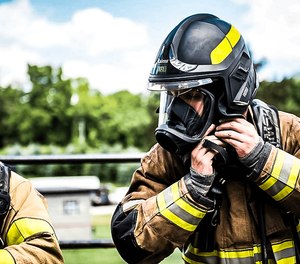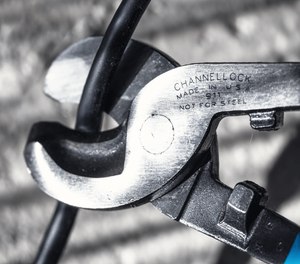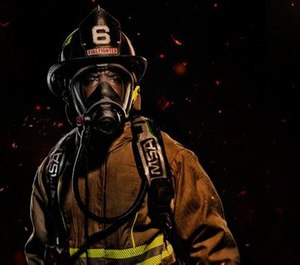By: Mrs. Avsec
Shhh! Don’t anyone let him know that I’ve commandeered his PC to post this blog. But it’s really important that I do this.
Why? Because he does a lot of good things for many people, most of all me! (Hey, he knows where his bread is buttered!) And it’s not often that I get the chance to publicly “blow his horn” over one of his accomplishments. So, here goes!
He showed me this e-mail that he received from one of the editors that he works with at Lexipol writing content for FireRescue1.com. In this case it was Laura Neitzel, the Senior Manager at Lexipol Brand Studio, for whom he writes articles about fire service products.
Guess who had the top 2 FireRescue1 articles, and 3 of the top 10 in 2019?
You, that’s who!!
- Today’s firefighter needs a purpose-built helmet (Client: Witmer/MSA) 1/10/19
- Be prepared for anything with a multi-tool built for the fire service (Client: Witmer/Channellock) 6/19/19
- A look back at the most important changes to NFPA 1851 that every firefighter should know (Client: Globe) 8/15/19
Thanks for the continued excellent work!
Best,
Laura
Now I’m pretty aware of how well the Chief writes because guess who does all his proof-reading? Me! And I gotta tell ya, the boy can write! So, it comes as no surprise to me that people like Laura and the readers of FireRescue1 like what he writes.
Now here are some snippets of each of those articles (Just to whet your appetite!):
New Purpose-built Firefighter Helmet from MSA

What if you were designing a helmet for all the jobs that you do today? For structural firefighting, auto extrication, wildland fires and all those other emergency responses you and your department make, you probably would want a helmet that:
- Provides 360-degree protection for your head from physical hazards and a degree of hearing protection from the noise pollutions present on emergency scenes.
- Is not constantly getting in the way, like when you’re working in tight quarters or when you try looking up and the brim smacks your SCBA cylinder. How many times have you taken off your helmet during an op because it was bugging you? Be honest!
- Incorporates all the tried and true add-ons (such as eye and face protection and lighting) into a streamlined helmet.
- Gives you better communications with built-in speakers and a microphone that works with or without your SCBA facepiece (because you always have your helmet on, but you’re not always wearing your SCBA, right?).
- Can easily be taken apart and completely cleaned and decontaminated following interior structural firefighting to reduce the risk of toxic chemicals and carcinogens remaining in the helmet or the suspension system.
- Fits comfortably so that pressure points don’t develop, even after an extended period of wear.
Sound about right? Check one out at Today’s firefighter needs a purpose-built helmet
Be Prepared for Anything with a Multi-Tool Built for the Fire Service
Ask any firefighter to empty the pockets on their turnout gear and it’s likely you’ll have enough inventory to stock a small hardware store. From pliers to screw drivers to nylon webbing to multi-tools (e.g., Leatherman), your average firefighter is ready for whatever comes next.
Something else you’ll likely see is a pair of Channellock pliers or wire cutters (or both) because, for almost as long as there have been firefighters in the U.S., the DeArment family has been making durable, quality hand tools for tradesmen and women.

Today a fifth generation of DeArments is running the family business in Meadville, Pennsylvania, and leading the way in creating innovative hand tools for working professionals, including firefighters. In fact, the company currently manufactures more than 130 different sizes and types of pliers and hand tools. Be prepared for anything with a multi-tool built for the fire service
A look back at the most important changes to NFPA 1851 that every firefighter should know

It has been just over 18 years since the first edition of NFPA 1851: Standard on Selection, Care, and Maintenance of Protective Ensembles for Structural Fire Fighting and Proximity Fire Fighting was published. This new user standard established requirements for the selection, care, and maintenance of firefighting protective ensembles to reduce health and safety risks associated with improper maintenance, contamination, or damage and has continued to evolve over the years.
That first edition of NFPA 1851 was basically written for fire service organizations as a standard for evaluating the risks that emergency responders face and their needs for protective ensembles. The protective ensemble elements are defined as coats, trousers, coveralls, helmets, gloves, footwear, and interface components.
“It was also intended to help fire departments develop purchase specifications and purchase structural firefighting ensembles,” said Pat Freeman, compliance manager at Globe. “It was really written for the end-users and, as the title would suggest, the goal was the selection, care, and maintenance of firefighting protective ensembles.” A look back at the most important changes to NFPA 1851 that every firefighter should know
 Fire & EMS Leader Pro The job of old firefighters is to teach young firefighters how to become old firefighters!
Fire & EMS Leader Pro The job of old firefighters is to teach young firefighters how to become old firefighters!